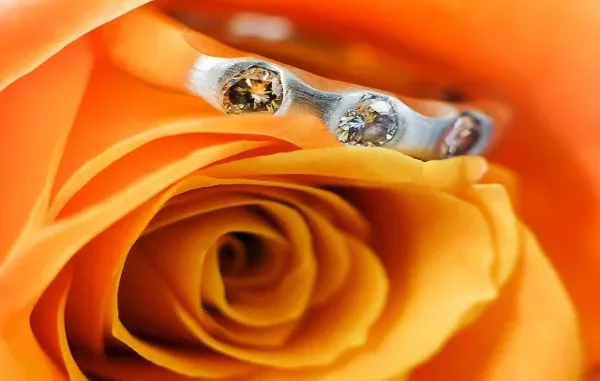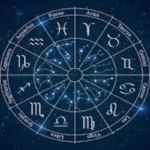

Choosing the perfect engagement ring is one of the most impactful decisions you’ll make when planning a wedding proposal. The shape of the diamond or gemstone sets the tone for the entire ring, reflecting your partner’s personality and style. This guide will help you confidently choose the perfect ring shape.
What Makes the Various Gem Shapes Sparkle?
Diamonds and other gemstones sparkle because they manipulate light in a process called refraction. This is when light passes through the stone.
Different gemstones require specific cuts to optimize refraction and create that sparkle we all know and love. Facets (flat, polished surfaces) are cut into the stones to achieve this. More facets typically mean more sparkle, but the effect is more pronounced in transparent or translucent gemstones.
7 Popular Ring Shapes
Overwhelmed by the abundance of ring shapes on the market? These are the seven most popular ring shapes for engagement rings.
Round Brilliant
The classic round brilliant cut is a very popular shape for engagement rings. Defined by 58 facets, this cut is designed to maximize sparkle and brilliance.
Marcel Tolkowsky, mathematician and gemologist, applied his skills to find the best formula for cutting and polishing a diamond. His work set a global standard for diamond proportions and continues to influence modern gemology today.
This classic shape offers both beauty and versatility, making it a favorite in fine jewelry settings.
Oval Shape
Nothing compares to the timeless beauty of oval engagement rings. A variation of the round brilliant, the oval is known for its flattering shape and impressive sparkle. Like the round cut, it features 58 facets. But its elongated shape creates the illusion of longer and slimmer fingers.
The oval cut was created by Russian-born diamond cutter Lazare Kaplan in 1957. It remains a popular choice for engagement rings to this day..
Princess Cut
The princess cut is technically a square modified brilliant cut. Although it appears square from above, it is shaped like an inverted pyramid. Most princess cuts have 58 facets, but they can have many more.
Some say this gemstone cut was invented in the 1970s; others believe it has a far earlier origin. But all agree that the princess cut’s geometric lines and angular appearance lend well to modern engagement rings.
Marquise Cut
Another modified brilliant cut with 58 facets, the marquise features a distinctive elongated shape with pointed ends, creating a dramatic silhouette. The elliptical shape of the marquise cut often makes gemstones appear larger than they are.
It is said to have originated in 18th-century France, when King Louis XV commissioned a jeweler to cut a gemstone to resemble the lips of his mistress. Its striking design and vintage appeal continue to captivate those seeking a statement piece. Like the oval, the marquise appears to elongate and slim the fingers.
The marquise cut has enjoyed renewed popularity, partly due to celebrity engagement ring choices.
Cushion Cut
The cushion cut combines a square or rectangular shape with rounded corners, resembling a pillow (hence its name).
This 19th-century design was once the most popular diamond cut. And although more modern cuts have arisen, it has recently regained popularity in vintage-inspired jewelry. This cut traditionally had 58 facets, but more recent variations can have more.
Pear Shape
The pear shape is a modified, elongated brilliant cut with 58 facets. Belgian diamond cutter Lodewyk van Bercken is credited with creating this gemstone cut.
It creates the same flattering illusion that oval and marquise cuts do: slender fingers. The versatile and graceful shape has led to jewelers using it in everything from pendants and earrings to engagement rings.
Emerald Cut
The emerald cut is a rectangular shape with linear step-like facets that emphasize clarity and luster over brilliance. Originally developed for emeralds, the cut rose to fame during the Art Deco era. It is still prized today for its minimalist style.
The standard emerald cut has 58 facets, like most brilliant cuts. But it has a clean, architectural look, ideal for showcasing high-clarity stones.
How to Choose the Right Shape
You have so many decisions to make: the wedding venue, catering, and honeymoon destination. But choosing the right ring shape is especially important. Here are our top three tips:
- Align your choice of ring with your partner’s personality. An extrovert may love a bold statement piece like an emerald or marquise cut, while someone more reserved may prefer a classic round brilliant or oval style.
- Match the ring to your partner’s unique style and interests. Are they an incurable romantic? The oval or pear shape may appeal to them. Do they love all things retro? A vintage cushion style might be the right choice. A minimalist may appreciate an emerald cut.
- You consider body type when finding the right fit in clothes. Do the same with jewelry. Smaller hands require daintier ring shapes. Larger hands can wear large stones and dramatic shapes well. Some ring styles also make fingers look longer and slimmer.






Leave a Reply